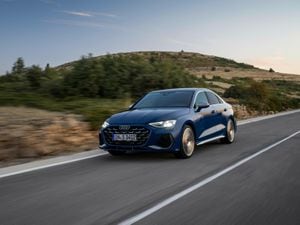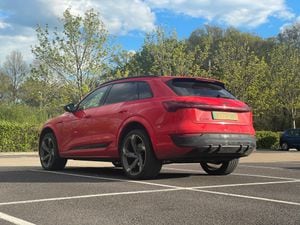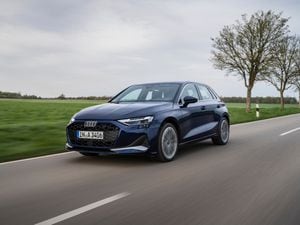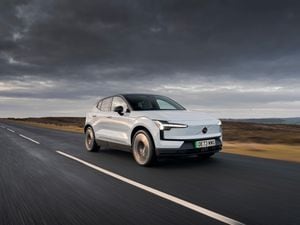Triple Test: Toyota Hilux V Mitsubishi L200 Barbarian SVP V Isuzu D-Max Arctic Trucks
Pick-ups remain a hugely popular choice for those who need decent levels of practicality with go-anywhere capability. Jack Evans has been behind the wheel of three favourites to see which one is best
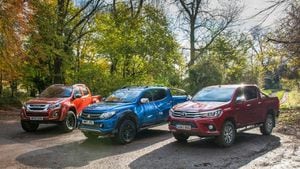
What are they?
If you’re after a useful, go-anywhere pick-up then you’re a little spoilt for choice here in the UK It’s an ever-growing market. In fact, close to 40,000 trucks were sold in 2016. We’ve got three popular choices to compare here – though two make their presence known even further thanks to special-edition trim levels.
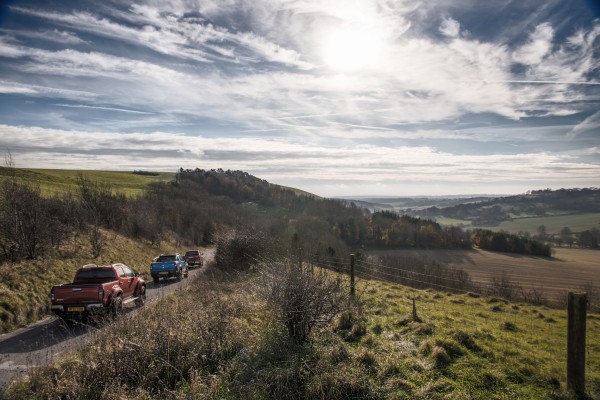
These are Mitsubishi’s L200 Barbarian SVP and the Isuzu D-Max Artic Trucks. We’ve put them up against Toyota’s Hilux, which has a premium feel and accomplished off-road prowess that should more than help it put up a decent fight.
What’s new?
The Artic Trucks edition is based on the regular Isuzu D-Max, but features larger wheel arches, strengthened Fox Performance Series suspension and beefier Nokian Rotiiva off-road tyres. It’s all designed to make the D-Max as capable as possible on the rough stuff, and a by-product of this is that it looks hugely imposing out on the road. It’s as close to an all-American truck as you’ll find on sale in the UK today.
The Toyota Hilux is a far more conventional affair. You’ll find no wide-arched styling here, just confident, squared-off looks instead. More than 18 million Hilux have been sold worldwide since it went on sale close to 50 years ago, and this latest incarnation is a pleasant evolution on the icon’s looks.
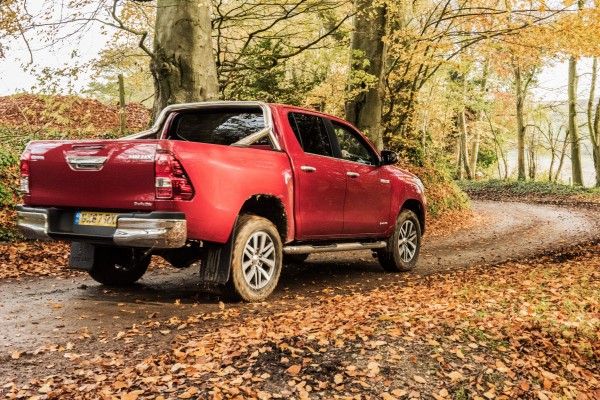
The Mitsubishi L200 Barbarian SVP closely resembles the D-Max in the looks department. It too benefits from chunkier off-road tyres and large black cladding sections. It also has desirability on its side – only 250 have been made in the UK, so it’s likely to remain somewhat of a ‘halo’ edition of the L200.
What’s under the bonnet?
All three trucks make use of large, relatively powerful engines. The Hilux’s 2.4-litre turbocharged diesel sends 148bhp and 400Nm of torque to all four wheels via a six-speed automatic gearbox, while the Isuzu’s 2.5-litre diesel produces 161bhp and 360Nm of torque. The Mitsubishi features a 2.4-litre diesel under the bonnet, and this puts out a hefty 178bhp and 430Nm of torque – making it the most powerful here.
Interestingly, the Mitsubishi also tops the bill in terms of economy, reaching a claimed 37.7mpg on a combined cycle. The Hilux, in comparison is claimed to return 36.2, with the D-Max matching that figure.
What’s it like to drive?
Now, a pick-up truck is never going to be the last word in on-road driving dynamics. Most feature a conventional chassis set-up that, though designed to be as strong as possible, doesn’t offer the best driving experience. However, they do need to be relatively useable on tarmac, as this is where many spend a lot of their time.
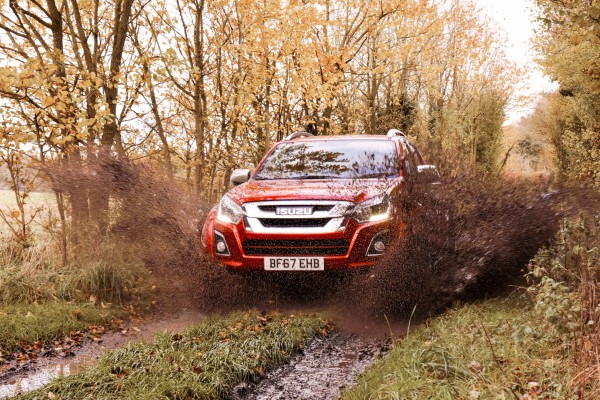
The Toyota Hilux is easily the most road-focused of the three. It rides well, and doesn’t lean all that much. Despite this, it’s still very capable off-road and doesn’t feel out of place on muddy tracks or slippery inclines – though its road tyres did struggle for traction on occasions during our test. However, it’s able to offer one of the best levels of ground clearance of the three at 293mm, so it’s certainly no town mouse. It does have plenty of shove, however, and its six-speed automatic gearbox shifts cleanly enough.
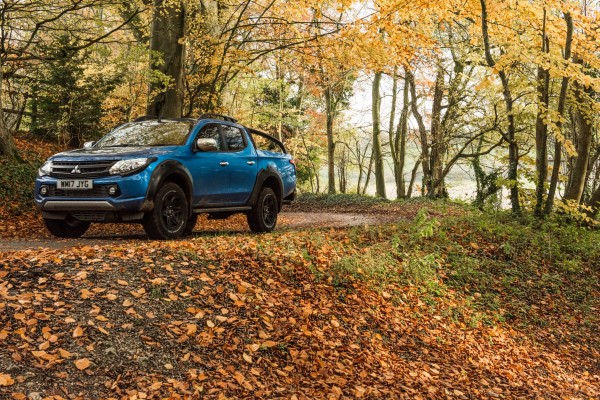
The D-Max, meanwhile, is fully geared-up for the rough stuff. Its Fox Performance suspension is heftier and it allows for an impressive 290mm of ground clearance. We took the D-Max through some deeply rutted lanes and it never troubled its bash guard – something that did occur with the Hilux. Where things do take a negative turn is back on-road.
The D-Max’s suspension, though enabling it to tackle all manner of obstacles off-road, makes it rather disjointed to drive on it. The steering feels relatively disconnected from the front wheels, and when combined with the truck’s large size, makes it somewhat unwieldly – particularly on tight country roads.
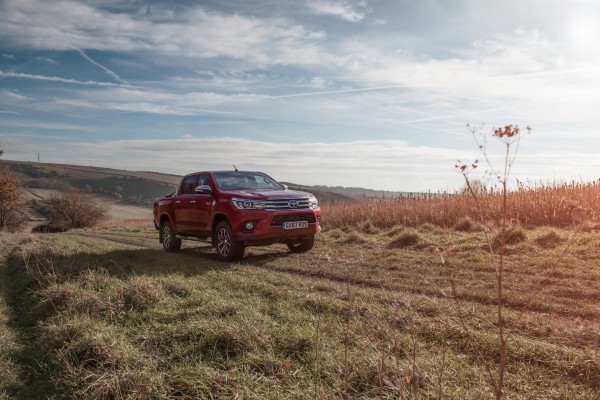
Lastly, but my no means least, comes the L200. It’s a similar story to the D-Max here; the Barbarian is capable off-road and great fun on it to boot, but the whole effect somewhat falls apart when you head out onto the road. It all feels slightly unstable – the steering lacks any real feel and this makes tricky to drive accurately. That said, the engine is torquey and pulls well from low revs, so performance isn’t too much of a worry.
How does it look?
There are two standouts here – the D-Max and the L200. Both feature special-edition bodykits, making them chunkier and more aggressive than the standard models. The D-Max, in particular, looks impressive on the road, with its wide arches and chunky tyres giving it a lot of presence – though anything of this size is going to be noticeable on the road regardless. The L200, particularly in the metallic blue of our test car, still looks good but doesn’t have quite the same level of chunkiness as the D-Max.
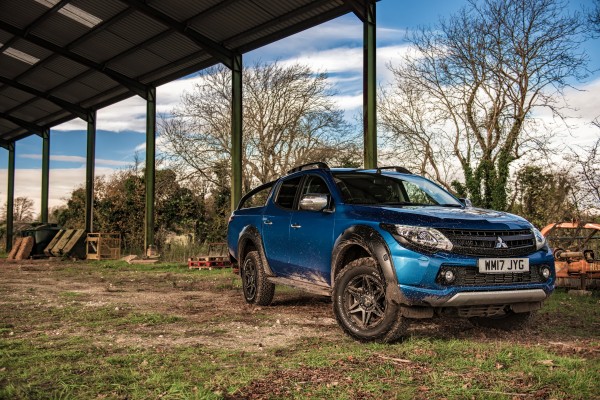
The Hilux doesn’t look bad by any stretch of the imagination, it’s just not quite as in-your-face as the others here. This may appeal to some people, particularly those who just want a capable, dependable yet understated pick-up.
What’s it like inside?
All three trucks are utilitarian by nature, meaning hard plastics and relatively rough-and-ready interiors. The Subaru’s seats take the crown as the most comfortable, with plenty of padding – though not all that much in the way of support. The Toyota’s interior plastics, as well as the overall fit-and-finish are the best here, offering the most car-like interior of the three. All feature that important high-riding driving position, giving an excellent view of the road ahead.
What’s the spec like?
All three trucks are generously specified, with plenty in the way of in-car entertainment. You’ll find Bluetooth connectivity fitted as standard here, along with satellite navigation and DAB digital radio. The Isuzu also benefits from Apple CarPlay and Android Auto, giving better smartphone integration. It’s worth remembering that all three trucks cost over £30,000 – so you’d expect to find these types of features fitted as standard at this price point.
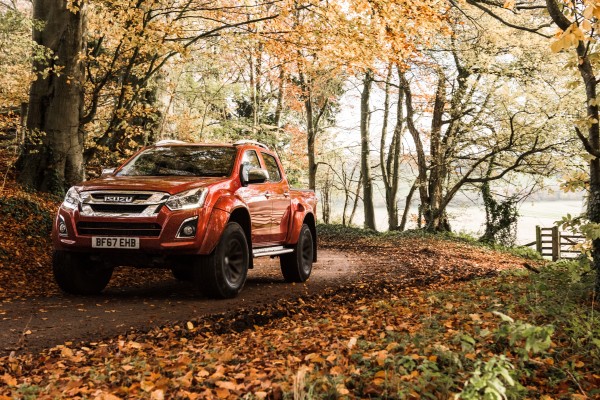
Where all three falter is the general quality of their infotainment systems. For some reason, they lack the ease-of-use and immediate responsiveness of rival systems – particularly when compared to the likes of Volkswagen’s Amarok. It just means that even simple operations, like pairing your phone for example, take a lot longer than they should.
Verdict
It’s tough call, this one. Each pick-up here has its own individual merits, offering better levels of off-road capability as well as tougher looks. However, there’s really only one standout winner here in terms of overall, everyday usability.
It’s really got to go to the Toyota Hilux. Whereas the D-Max and L200 do remarkably well off-road, they struggle to match the Hilux for its on-road manners. After all, you don’t spend all of your time tackling rivers and steep gradients and, though the Hilux can do these, it’s also relaxing and relatively refined on the road as well.

